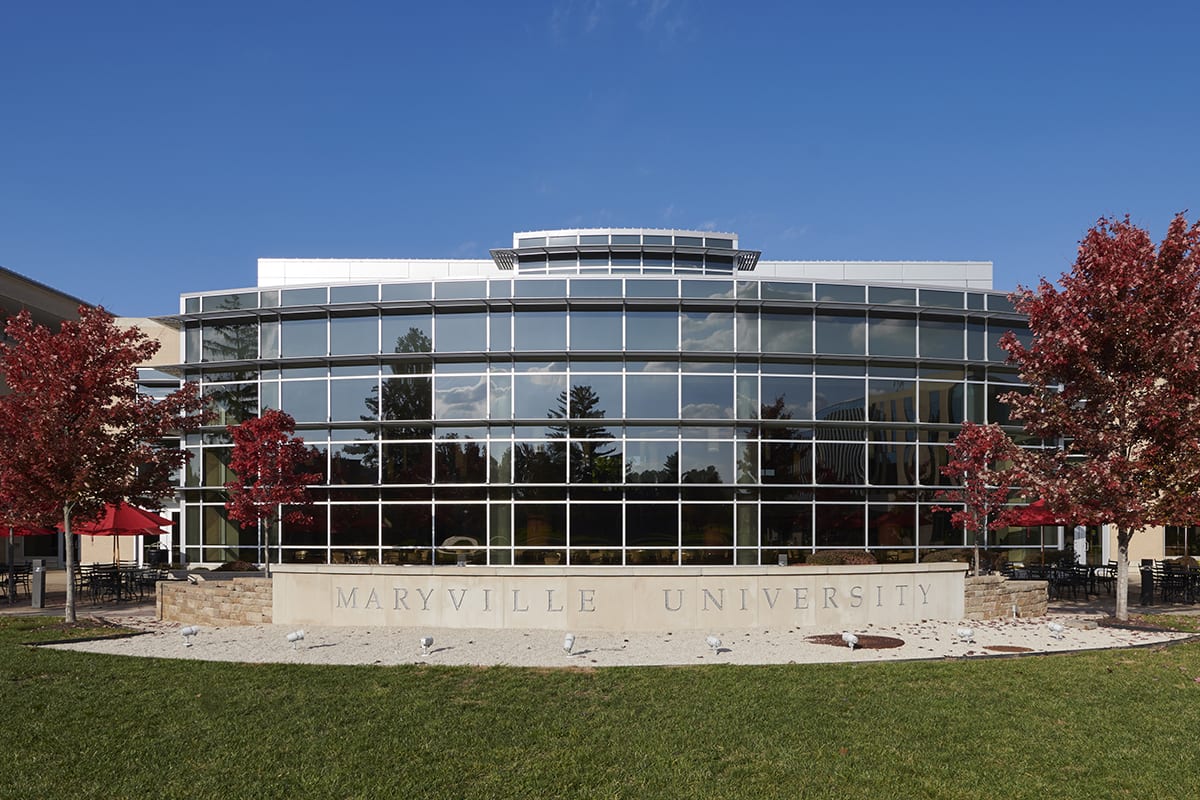It’s hard to look anywhere on the campus of Maryville University without seeing a bright red “M.”
The pointy, sans serif logo is omnipresent — plastered on walls, printed on floor mats, emblazoned on students’ sweaters. At this private university in Town and Country, the M is more pervasive than the Starbucks logo on students’ cups or the Nike swoosh on sneakers.
If the M resembles a corporate logo more than a traditional university symbol, that’s because Maryville is anything but a traditional university.
At a time when small private colleges across the country are bleeding students, Maryville’s total enrollment has grown by 82% from 2013 to 2018. Over the 10-year period between 2007 and 2017, it had the fourth-highest growth rate among all private, nonprofit universities in the nation, according to the Chronicle of Higher Education. And it’s not slowing down: The university expects enrollment to double over the next five years to hit 20,000 students, fueled primarily by students enrolled in online courses, who now account for nearly 60% of total enrollment.
Meanwhile, amid that high demand, Maryville President Mark Lombardi is taking the unorthodox step of freezing the cost of tuition in perpetuity.
Maryville has achieved this by thinking and acting less like a university and more like a startup. It’s using technology to cut bureaucratic costs, making it leaner and more nimble, allowing it to be more reactive to the market with degree programs designed to meet current workforce demand.
And, like an effective startup, it’s a disrupter, defying the notion that higher education should be more about the pursuit of knowledge than jobs.
“The reality is, those days are over now,” Lombardi said. “Can universities remake ourselves in this new age? Sure we can, but we have to be open to it. We can’t just hang onto the past as if somehow it’s perfect. Education is first and foremost about preparing people for the future, not preparing them for the past.”
Yet in drafting what it believes is the blueprint for how to make higher education more profitable, it’s presented itself with a new kind of challenge, one that’s also befitting of a successful startup.
It has to be wary of growing too fast.
CLICK HERE TO READ THE FULL STORY.
This story was originally published in the St. Louis Business Journal.
